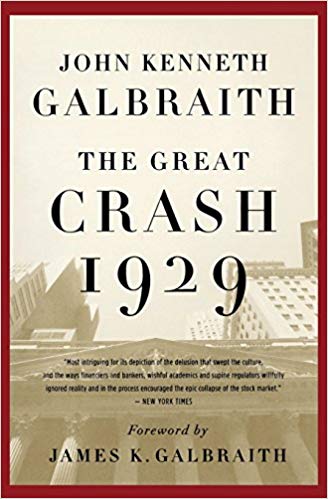In The Great Crash 1929, world-renowned economist John Kenneth Galbraith takes us through the events that precipitated the stock market crash of October 1929, identifies the key players and examines the aftermath the speculative bubble’s inevitable end. Galbraith authored dozens of books and hundreds of articles, creating a body of work that had a huge impact on post-war economics and propelled him to political and academic stardom.
But 90 years later, The Great Crash 1929 remains surprisingly relevant.
As a millennial and new participant in capital markets I had always viewed the Great Crash and ensuing Depression as the result of factors we’d outgrown – and from which we had undoubtedly learned important lessons.
Turns out I was wrong.
We don’t need to look any further than the 2008 financial crisis to find the same toxic behaviors and “financial innovations” that brought the world economy to a screeching halt in 1929. In fact, the Dot Com Bubble of the early 00s and Black Monday in 1987 seem to indicate a trend which, according to Galbraith, shows speculative bubbles are not a matter of if but when.
First published in 1955, The Great Crash 1929 highlights several factors warning signs that today sound eerily familiar.
The parallels are abundant, but a few stand out, such as the availability of credit in the lead up to 1929, which encouraged trading on margin and introduced the average investor to the benefits (and pitfalls) of leverage. In 2019, historically low interest rates – due in part to an unhealthy relationship between government and central bankers – are encouraging similar risk-taking behaviors and magnifying inevitable market corrections.
In the 1920s, new financial innovations, like the trust company and access to information via the ticker, made investing more accessible and popularized the practice. Wall Street gurus were heralded as geniuses and became as popular and wealthy as movie stars. Today, we check our ETF prices on our phones and listen attentively to the self-interested talking heads on the local business network tell us about the next big thing.
Galbraith makes clear the speculative frenzy of the roaring 20s and the precipitous collapse of Wall Street are as much a study in market behavior as in human behavior, and notes: “This is a world inhabited not by people who have to be persuaded to believe, but by people who want an excuse to believe.”
I enjoyed this book very much and appreciated the succinct but detailed style in which it was written, because it made the normally mundane business of economic analysis relatable.
Considering investors’ short memory and bearing in mind that our blind spots are as cyclical as markets themselves, it would behoove us all to take an afternoon to learn and re-learn the lessons of Galbraith in The Great Crash 1929.
Recommended Follow Up: A Short History of Financial Euphoria, John K Galbraith


